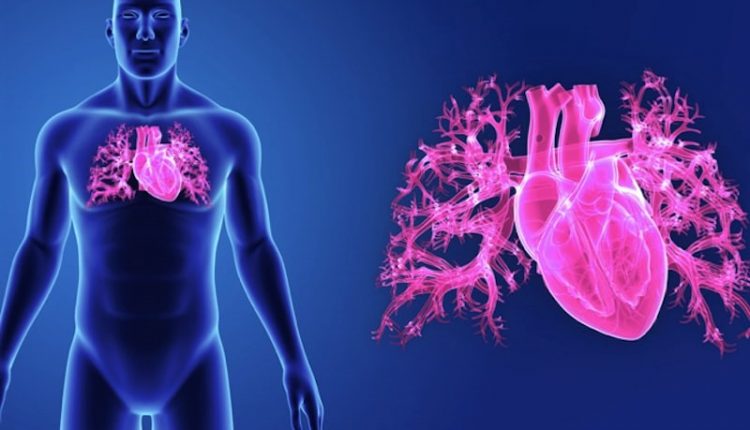
Heart disease: what are coronary angioplasty, stents and bypasses
Coronary angioplasty is the procedure by which an obstructed blood vessel is dilated using a balloon placed where the problem arises; it is inflated to recreate the space needed for blood to flow
In some cases, in addition to angioplasty, it may be necessary to implant a stent, a small metal tube-like mesh that, once extended, will be adhered to the wall of the vessel in order to dilate it so that the blood can flow.
Coronary problems are those involving poor blood and oxygen supply to the heart, resulting from obstructions in the heart arteries, the coronary arteries.
It will be necessary to intervene to restore blood flow by means of myocardial revascularisation.
Typically, interventions such as coronary bypass and coronary angioplasty are used, depending also on the needs of the patients
Until the early 1970s, only bypass surgery was used; angioplasty took over with the advent of new technologies and less invasive procedures, which did not require general anaesthesia but could be performed under local anaesthesia.
The coronary angioplasty procedure involves inserting a wire into the radial artery of the wrist, and no longer from the femoral artery as in the past, which will be run to the coronary artery.
A metal wire will be inserted, which will be run to the obstruction, and a balloon will be run on that wire until it is positioned in the area of the obstruction.
The balloon will then be inflated and a further balloon with a metal stent on top will be placed.
The second balloon fitted with a stent will also be inflated, which will open and allow the vessel to remain open; a stent is a microscopic metal prosthesis, the purpose of which is to keep a vessel open at a blockage that may have formed within it, and which slows down and risks blocking the blood flow.
Angioplasty will be used when blockages affect short sections of individual coronary arteries; it is an operation with minimal invasiveness and which provides long-term results.
If, on the other hand, the three main branches or several segments are involved, bypass surgery will be used.
In cases where both procedures can be used, the choice will be made by cardiologists and cardiac surgeons based on what the risks and benefits might be for the patient concerned.
The angioplasty procedure lasts between 15 and 60 minutes, depending on the complexity of the case.
It will be performed under partial anaesthesia, although in exceptional cases it may be necessary to use general anaesthesia.
Coronary artery bypass surgery consists of creating a sort of vascular bridge, after removal of a mammary artery or saphenous vein branch, in order to bypass the obstruction and/or narrowing of the coronary arteries so as to restore blood flow to the myocardium.
Coronary artery bypass surgery is an operation that is performed in the open heart following thoracotomy; it is much more invasive than angioplasty but will allow intervention where there is severe occlusion and a large number of obstructed coronary arteries.
Following the operation, it may be necessary to resort to pharmacological treatment because, as the stent is a foreign body, it will be necessary to wait for it to be covered by the vessel tissue.
During this time, anti-platelet agents will be used to inhibit the platelets and their aggregation; aggregation that could cause a clot in the very area where the stent is grafted.
In addition to antiplatelet agents, aspirin could also be administered, but in low dosages.
Read Also
Emergency Live Even More…Live: Download The New Free App Of Your Newspaper For IOS And Android
Coronary Angioplasty, How Is The Procedure Performed?
Carotid Angioplasty And Stenting: What Are We Talking About?
Percutaneous Transluminal Coronary Angioplasty (PTCA): What Is It?
Aneurysm Surgery: Traditional Open Surgery
Atrial Fibrillation: Symptoms To Watch Out For
Coronary Angioplasty, What To Do Post-Operatively?
What Is Aortobifemoral Bypass? An Overview
Myocardiopathy: What Is It And How To Treat It?
Venous Thrombosis: From Symptoms To New Drugs
Cyanogenic Congenital Heart Disease: Transposition Of The Great Arteries
Heart Murmur: What Is It And What Are The Symptoms?
Heart Rate: What Is Bradycardia?
Branch Block: The Causes And Consequences To Take Into Account
Cardiopulmonary Resuscitation Manoeuvres: Management Of The LUCAS Chest Compressor
Supraventricular Tachycardia: Definition, Diagnosis, Treatment, And Prognosis
Identifying Tachycardias: What It Is, What It Causes And How To Intervene On A Tachycardia
Myocardial Infarction: Causes, Symptoms, Diagnosis And Treatment
Aortic Insufficiency: Causes, Symptoms, Diagnosis And Treatment Of Aortic Regurgitation
Congenital Heart Disease: What Is Aortic Bicuspidia?
Atrial Fibrillation: Definition, Causes, Symptoms, Diagnosis And Treatment
Ventricular Fibrillation Is One Of The Most Serious Cardiac Arrhythmias: Let’s Find Out About It
Atrial Flutter: Definition, Causes, Symptoms, Diagnosis And Treatment
What Is Echocolordoppler Of The Supra-Aortic Trunks (Carotids)?
What Is The Loop Recorder? Discovering Home Telemetry
Cardiac Holter, The Characteristics Of The 24-Hour Electrocardiogram
Peripheral Arteriopathy: Symptoms And Diagnosis
Endocavitary Electrophysiological Study: What Does This Examination Consist Of?
Cardiac Catheterisation, What Is This Examination?
Echo Doppler: What It Is And What It Is For
Transesophageal Echocardiogram: What Does It Consist Of?
Paediatric Echocardiogram: Definition And Use
Heart Diseases And Alarm Bells: Angina Pectoris
Fakes That Are Close To Our Hearts: Heart Disease And False Myths
Sleep Apnoea And Cardiovascular Disease: Correlation Between Sleep And Heart



